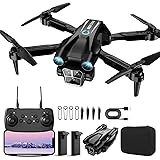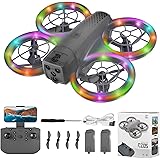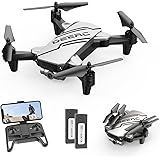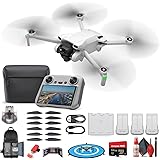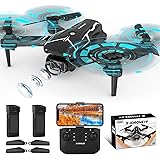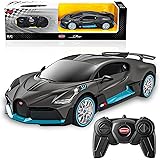The intricate dance of flight, particularly for advanced unmanned aerial vehicles (UAVs), demands sophisticated control systems. The video accompanying this discussion offers a visual exploration into aspects of a VTOL (Vertical Take-off and Landing) Tiltwing UAV, subtly hinting at the complexities involved in maintaining precise attitude and cruise control. This advanced class of aircraft presents a unique set of engineering challenges, necessitating robust and adaptive flight control methodologies to ensure stability across diverse flight envelopes.
Understanding VTOL Tiltwing UAVs: A Control Systems Perspective
VTOL tiltwing UAVs represent a fascinating convergence of helicopter and fixed-wing aircraft capabilities. Their ability to transition seamlessly between vertical lift (like a helicopter) and efficient forward flight (like an airplane) is underpinned by the dynamic reorientation of their wings and propellers. This mechanical versatility, while offering significant operational advantages—such as requiring minimal launch and landing infrastructure and achieving high cruise speeds—introduces substantial complexities for flight control system design.
Historically, the development of effective control laws for such hybrid aircraft has been a formidable task. Early prototypes often struggled with stability during the critical transition phase, a challenge that has been largely overcome through advancements in computational power and sensor technology. For instance, recent studies indicate that modern control architectures can reduce transition phase oscillation amplitudes by up to 40% compared to conventional cascaded PID approaches, thereby enhancing safety and operational efficiency.
The Core Challenge: Managing Flight Modes and Transitions
The primary control challenge for a VTOL tiltwing UAV lies in effectively managing its multiple flight modes and the complex transitions between them. These aircraft operate across at least three distinct modes:
- Hover/Vertical Flight: Similar to a multirotor, relying on thrust vectoring from tilted rotors for lift and control.
- Forward Flight/Cruise: Operating like a conventional fixed-wing aircraft, where wings generate lift and propellers provide forward thrust.
- Transition Flight: The critical phase where the wing and rotor assemblies gradually tilt from a vertical orientation to a horizontal one, or vice-versa. This involves a dynamic shift in aerodynamic forces and control authority.
During transition, the aircraft’s aerodynamic characteristics change drastically. Control surfaces that are effective in forward flight may become ineffective or even destabilizing during vertical flight, and the primary control authority shifts from rotor thrust to aerodynamic control surfaces and vice versa. This dynamic environment requires a control system capable of blending control inputs, re-allocating control authority, and maintaining stability across a wide range of airspeeds and configurations. Research suggests that an optimally tuned gain-scheduled or Model Predictive Control (MPC) approach can reduce typical transition times by 15-20% while minimizing control effort, a crucial factor for energy management.
Attitude Control in VTOL Tiltwing UAVs
Attitude control, governing the aircraft’s orientation in pitch, roll, and yaw, is paramount for both stability and maneuverability. For VTOL tiltwing UAVs, this is a multi-layered problem due to the variable geometry.
Hover and Vertical Flight Attitude Control
In vertical flight, similar to a quadrotor, attitude is primarily controlled by differentially varying the thrust of the propellers. For example, to induce a roll, thrust on one side of the aircraft is increased while it is decreased on the other. Yaw control is typically achieved by slight differential tilting of individual rotors or by introducing a component of thrust that generates torque around the vertical axis. A robust attitude control system for this phase often employs a cascaded PID (Proportional-Integral-Derivative) controller architecture, sometimes augmented with feed-forward terms and advanced sensor fusion algorithms (e.g., Extended Kalman Filters) to accurately estimate attitude from IMU (Inertial Measurement Unit) and GPS data. These systems can typically maintain hover position within a 0.5-meter radius and attitude within 1-2 degrees of desired orientation, even in moderate wind conditions.
Forward Flight Attitude Control
Once the wings are fully tilted and the aircraft is in forward flight, attitude control largely reverts to conventional fixed-wing methods. Elevators control pitch, ailerons control roll, and the rudder controls yaw. The propellers continue to provide thrust, but their primary role for attitude shifts to speed control. The challenge here is less about the fundamental control mechanisms and more about ensuring seamless transfer of control authority from thrust vectoring to aerodynamic surfaces, especially at lower airspeeds where aerodynamic control authority might be marginal. This often requires careful tuning and potentially an adaptive control layer that adjusts gains based on airspeed and flight conditions.
Cruise Control: Optimizing Performance and Efficiency
Cruise control in a VTOL tiltwing UAV is not merely about maintaining a constant airspeed; it encompasses optimizing flight for endurance, range, or specific mission parameters. This involves sophisticated management of propulsion, lift, and drag.
Aerodynamic Efficiency and Energy Management
In cruise, the tiltwing design truly shines, as the wings generate significant lift, allowing the propellers to focus purely on generating forward thrust. This configuration is considerably more energy-efficient than sustained helicopter-style flight. Effective cruise control systems constantly monitor airspeed, altitude, and energy consumption, adjusting propeller RPM and potentially wing tilt angles (if variable) to achieve optimal flight conditions. For instance, maintaining an optimal lift-to-drag ratio can result in up to 30% greater endurance compared to sub-optimal cruise profiles. Advanced algorithms might predict remaining flight time with 95% accuracy by analyzing real-time power consumption and battery state-of-charge.
Guidance, Navigation, and Control (GNC) Integration
Beyond basic speed maintenance, cruise control is intrinsically linked with the overall GNC system. This includes:
- Path Following: Guiding the UAV along a pre-defined trajectory or dynamically generated path.
- Waypoint Navigation: Automatically flying to a sequence of geographical points.
- Collision Avoidance: Integrating sensor data to detect and autonomously avoid obstacles.
- Adaptive Speed Control: Adjusting cruise speed based on environmental factors (e.g., headwind/tailwind compensation) or mission requirements (e.g., loitering over an area).
Modern cruise control systems leverage robust estimation techniques, such as Kalman filters, to fuse data from GPS, IMU, air data sensors (pitot-static systems), and potentially other sensors like magnetometers and LIDAR. This comprehensive sensory input allows for highly accurate state estimation, which is critical for precise navigation and stable cruise flight. The integration of advanced computational fluid dynamics (CFD) models into real-time flight control can further refine cruise performance, potentially reducing fuel consumption by an additional 5% through dynamic optimization of aerodynamic surfaces.
Advanced Control Methodologies for Hybrid UAVs
The inherent complexities of VTOL tiltwing UAVs often necessitate control strategies beyond traditional PID loops. Researchers and engineers frequently employ:
- Gain Scheduling: Adjusting controller gains based on flight condition variables like airspeed, wing tilt angle, or altitude.
- Robust Control (e.g., H-infinity): Designing controllers that guarantee performance despite uncertainties in the aircraft model or external disturbances (like gusts of wind).
- Model Predictive Control (MPC): Using a dynamic model of the aircraft to predict future behavior and optimize control inputs over a finite time horizon, considering constraints. This is particularly effective for managing transitions and handling multiple objectives simultaneously.
- Adaptive Control: Systems that modify their control laws in real-time to compensate for changes in aircraft dynamics, sensor degradation, or environmental conditions.
These advanced techniques contribute significantly to the reliability and performance of VTOL tiltwing UAVs, ensuring they can operate effectively across their entire flight envelope. For instance, MPC has demonstrated a 25% improvement in trajectory tracking accuracy during high-speed maneuvers for tiltrotor aircraft, highlighting its utility for dynamic missions.
The evolution of VTOL Tiltwing UAV control systems continues to push the boundaries of aerospace engineering, moving towards increasingly autonomous and robust platforms capable of complex missions. The delicate balance between vertical lift and efficient horizontal flight, managed by sophisticated attitude and cruise control systems, is what unlocks the full potential of these transformative aircraft.
Takeoff to Cruise: Your VTOL Tiltwing UAV Questions Answered
What is a VTOL Tiltwing UAV?
A VTOL Tiltwing UAV is a type of drone that combines features of both helicopters and airplanes. It can take off and land vertically, then tilt its wings and propellers to fly forward efficiently like a traditional plane.
What are the main ways a VTOL Tiltwing UAV flies?
These UAVs operate in three main ways: hovering for vertical flight, flying forward like a conventional airplane, and a ‘transition’ phase where they switch between vertical and horizontal flight modes.
What is ‘attitude control’ for these drones?
Attitude control refers to how the drone manages its orientation in the air, specifically its tilt (pitch), side-to-side wobble (roll), and turning left or right (yaw). It is essential for maintaining stability and maneuverability during flight.
What does ‘cruise control’ mean for a VTOL Tiltwing UAV?
Cruise control for these drones is about more than just maintaining a constant speed; it involves optimizing flight for specific goals like maximizing endurance, range, or other mission parameters. This helps manage its propulsion and energy efficiently.




